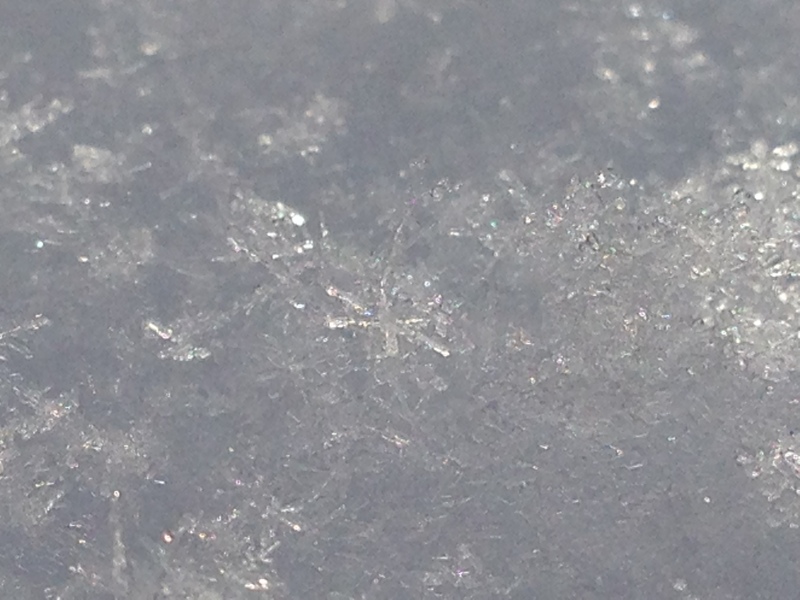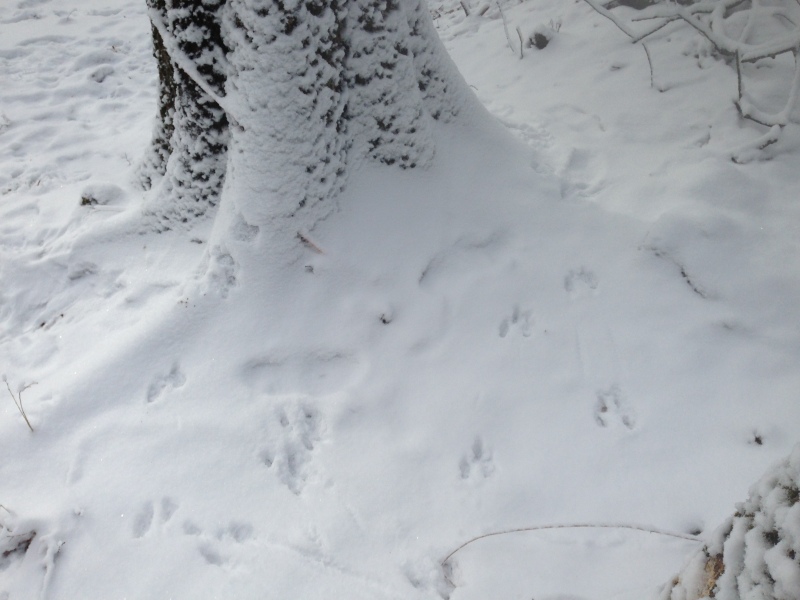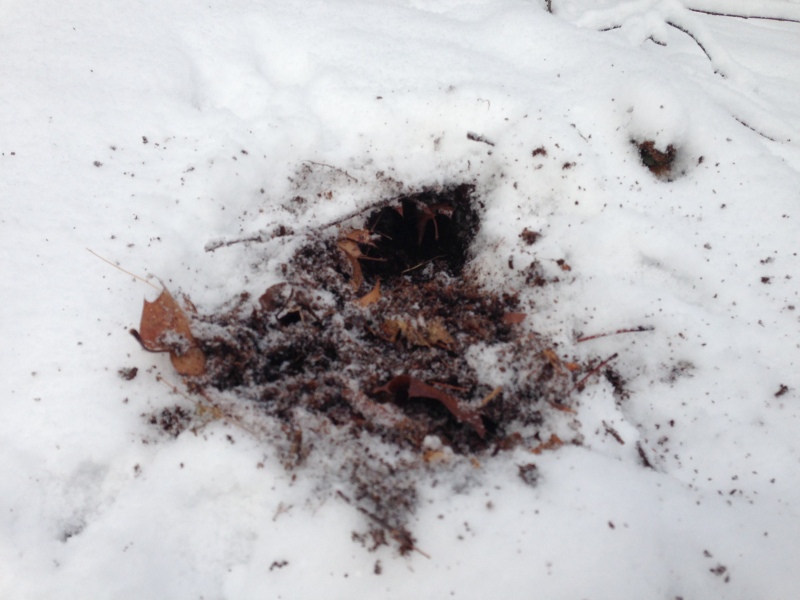THOREAU, REVISITED
“This morning it is snowing and the ground is whitened…looking more closely…I found that it was sprinkled all over… with regular star-shaped cottony flakes with 6 points…It snowed geometry.”
That was Henry David Thoreau’s observation from a winter walk he recorded in his journals during just about this very same week in 1855. I like to read Thoreau’s journals just to check in on what he was doing on the same day I’m here nearby in a similar landscape at the Harvard Forest 159 years later, taking my own deep look at the woods and its denizens.
The very day I read this, I had taken my own note of the geometry snowed outside overnight, with a fresh four inches of perfection.

“It snowed geometry,” Thoreau wrote on Dec. 13, 1855. His lovely phrase is just as apt today to describe this fresh snow I photographed at the Harvard Forest during the same week he wrote that, 159 years ago.
Thoreau went on that day to note what I call nature’s newspaper: The record of the life of the forest written in freshly fallen snow.
How winter opens our eyes to what is going on all the time around us that we do not see. Odd that we call it the dead of winter, when so much doesn’t die at all, and our own lives are actually expanded by winter in so many ways. Not only in what we can see, but in where we can go. All sorts of places off limits during the rest of the year suddenly become broad playgrounds we can access on the ice. But best of all to me is the sudden opening of a picture window into the world of animals that snow provides. Here’s Thoreau again:
“The sun has quite melted the thin snow on the south sides of the hills – but I go to see the tracks of animals that have been out on the north sides—First getting over the wall under the walnut trees on the south brow of the hill I see the broad tracks of squirrels, probably red, where they have ascended and descended the trees – and the empty shells of walnuts which they have gnawed left on the snow – The snow is so very shallow that the impression of their toes is the more distinctly seen – It imparts life to the landscape to see merely the squirrels tracking the snow at the base of the walnut tree. You almost realize a squirrel at every tee. The attractions of nature thus are condensed or multiplied. You see not merely bare tree & ground which you might suspect that a squirrel had left – but you have thus unquestionable & significant evidence that a squirrel has been there since the snow fell – as conclusive as if you saw him.”
The very same day I observed my own six-armed snow geometry, I had also marveled at the tracks at the big oak I am studying at the Harvard Forest. How the snow revealed the animals’ busy run to the stash of acorns at its base!

The big oak I am studying at the Harvard Forest, the morning after several inches of fresh snow. What busy animal doings are recorded on its fresh, white page!
Aficionados can read Thoreau’s lovely passages for themselves in his journals published online, a great service to readers of the University of California at Santa Barbara for their accessibility, with typed transcription of Thoreau’s handwriting. To enjoy these passages, open the link and browse pages 214 to 218.
What is it about walking? It opens the mind and eye in a way few other things do. Thoreau of course was on to this, and we can all learn from his ambulatory study of the world around him. Part of what I most enjoy in being here at the forest is the pleasure and privilege of long daily walks, to see what nature is up to – and to feel the continuity of this simple pleasure, undiluted by the passage of time or history or technological change since Thoreau wrote, and long before.
For all that has happened since Thoreau struck off on that winter day December 13, 1855 recorded in his journal, nothing has changed in the delight of the geometry of a snowflake, or the wonder at the animal lives revealed all around us by tracks in fresh snow.

Someone’s been raiding their winter stores of acorns at the base of the big oak I am studying at the Harvard Forest. The snow reveals the lives of animals usually hidden all around us.

Leave a Reply